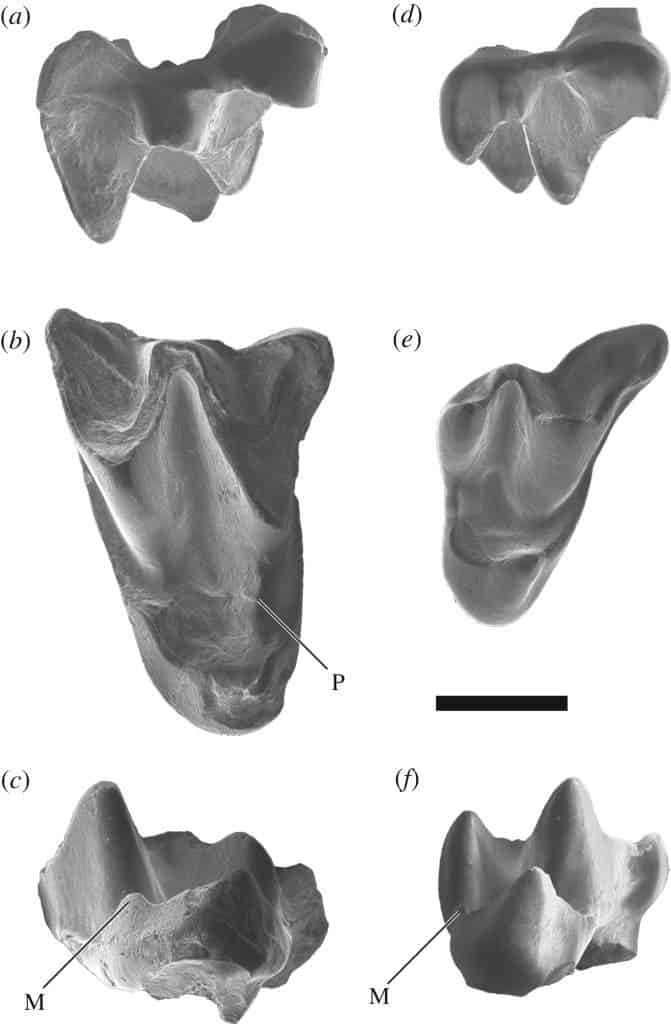Asian bats — I think we’ve all heard more about them than we’d like, these past two years. But new research comes with a twist on that subject. Researchers from the US and China have identified the oldest known bat fossil from the Asian record.

The discovery helps us better understand the evolutionary history of the only true mammalian flyers, pushing their story back to the Eocene — as far as we know. It also raises the possibility that the bat family originates in Asia entirely, although it’s too soon to say for sure.
Whence bats come from
“Bats show up in the fossil record out of the blue about 55-ish million years ago — and they’re already scattered on different parts of the globe,” said lead author Matthew Jones, a doctoral student at the KU Biodiversity Institute and Department of Ecology & Evolutionary Biology. “Before this, the earliest bats are known from a couple of places in Europe — Portugal and southern France — and Australia. So, when they show up early in the fossil record as these fragmentary fossils they’re already effectively worldwide.”
“By the time we get their earliest known full skeletons, they look modern — they can fly, and most of them are able to echolocate. But we don’t really know anything about this transitional period from non-bats to bats. We don’t even really know what their closest living relatives are among mammals. It’s a really big evolutionary mystery where bats came from and how they evolved and became so specialized.”
The team comprised members from the University of Kansas and the Chinese Academy of Sciences. The fossil they describe was unearthed at a remote field site in the Junggar Basin, China, after quite a long digging effort. Although they suspected that the sites would be rich in Paleocene and Eocene fossils, Jones explained, various members of the team worked here for several years, sifting the sediment, before finding any actual fossils.
“We’ve been fortunate enough to be able to host our Chinese colleagues here in Lawrence for extended research visits, and they’ve more than reciprocated by hosting us for research and fieldwork in China. This work in the Junggar Basin is really trailblazing work because the fossil record in this part of China is only just barely beginning to emerge, and this area is very removed and isolated. It’s just a giant empty place. There are some camels, some snakes and lizards, but you don’t see many people there. That remoteness makes the logistics to do fieldwork there quite difficult and expensive because you’ve got to bring in all your food and water from far outside — all of that hindered research in this area previously.”
Residues from the sieving were sent to the Institute of Vertebrate Paleontology and Paleoanthropology in Beijing for sorting. Back in 2017, they got the first sign that their work would pay off: a possible fragment of a fossilized bat — a tooth. One year later, a second tooth was found amid the sieved dirt. Their structure was distinctive enough to suggest they belonged to a yet-undescribed species; the team christened it Altaynycteris aurora.
Residue from the sifting was sent to the Institute of Vertebrate Paleontology and Paleoanthropology in Beijing for sorting. Back in 2017, they got the first sign that their work would pay off: a possible fragment of a fossilized bat — a tooth. One year later, a second tooth was found in the dirt. Their structure was distinctive enough to suggest they belonged to a yet-undescribed species; the team christened it Altaynycteris aurora.
Still, the teeth leave us with more questions than answers. The morphological details of the species remain unknown; we can’t even say for sure whether it was able to fly, or echolocate, like bats today do. According to Jones, they look to be “in between what we would expect a bat ancestor to look like […] and what true bat looks like”.
“So, they have some features that are characteristic of bats that we can point to and say, ‘These are bats.’ But then they have some features that we can call for simplicity’s sake ‘primitive,'” he adds.
The paper “The earliest Asian bats (Mammalia: Chiroptera) address major gaps in bat evolution” has been published in the journal Biology Letters.









